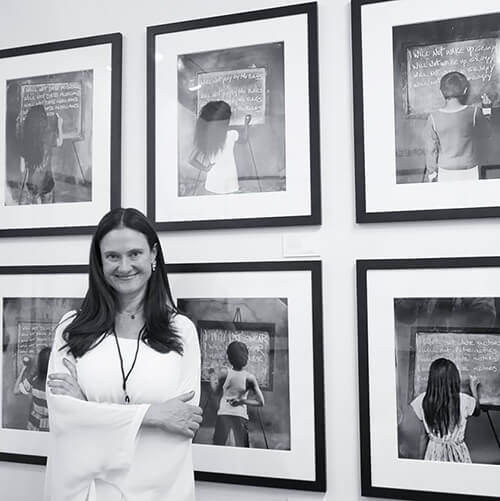Jamie Johnson is a Los Angeles photographer specializing in children and alternative processes. Winner of the Julia Margaret Cameron Portfolio Award and Spider Black and White Photography Award. Her work has been published in many photography magazines and is exhibiting in galleries worldwide. Jamie's work is in the permanent collection of the Hammer Museum in Los Angeles and Archaelogy Museum in Alabama and currently has a show at the Norton Museum of Fine Art in Palm Beach Florida.
As a mother and fine art photographer whose bread and butter comes from photography, my passion for faces of the next generation has been a life long focus. I travel the world capturing images children and childhood around the globe. From Laos to Cuba, from the Amazon to India, I have found a universality in the world of children. I have always been particularly interested in observing how girls are raised, examining the morals, values, and education of the next generation of young women. My work has been exhibited Internationally in galleries and museums from New York thru London and Paris, and has been published in dozens of magazines.
My Journey with the Irish Travellers
I have spent my entire career photographing children all over the world. The last five years I have focused my eyes on the Irish Traveller that live in caravans on the side of the road or in open fields throughout Ireland. The Traveller community are an Irish nomadic indigenous ethnic minority. There is no recorded date as to when Travellers first came to Ireland. This is lost to history but Travellers have been recorded to exist in Ireland as far back as history is recorded. Even with their great history they live as outsiders to society and face unbelievable racism growing up. As a mother of two daughters I became so interested in the culture and traditions and lives of these children.
The experience I had photographing the grit and beauty, that is the everyday life of a Traveller child, is one that inspires me everyday. Their deep respect for family and cultural values is refreshing, one that can be quite difficult to find in an age with the convince of social media. Not always immediately accepting of an outsider holding a large camera, I took my time getting to know and understand these faces that represent the new generation. My ever growing fascination with the children of today has lead my all over the world, capturing their innocence or in some cases loss of, in its most raw form.
Unlike most children they are unable to refer to a history book to learn about their ancestors, a part of this journey was being able to document an era that is so different to any other I have shot. It is one that is and will always be rapidly changing, everytime I visit it is a whole different world yet with the relationships I have been lucky enough to make, it seems to feel like I never left. I am exponentially grateful the young people documented and that I have come in contact with over my years of visiting are able to call me their friend and I can happily say the same.
It is with an honest heart I hope to show that these beautiful children who have great hopes and goals and work everyday to reach their dreams no matter how hard they have to fight racisms and stereotypes placed on them for centuries. A child is an innocent, happy, precious part of the world that should be loved and accepted and encouraged no matter where or how they live.
More about The Irish Travellers
Pre-order her new book